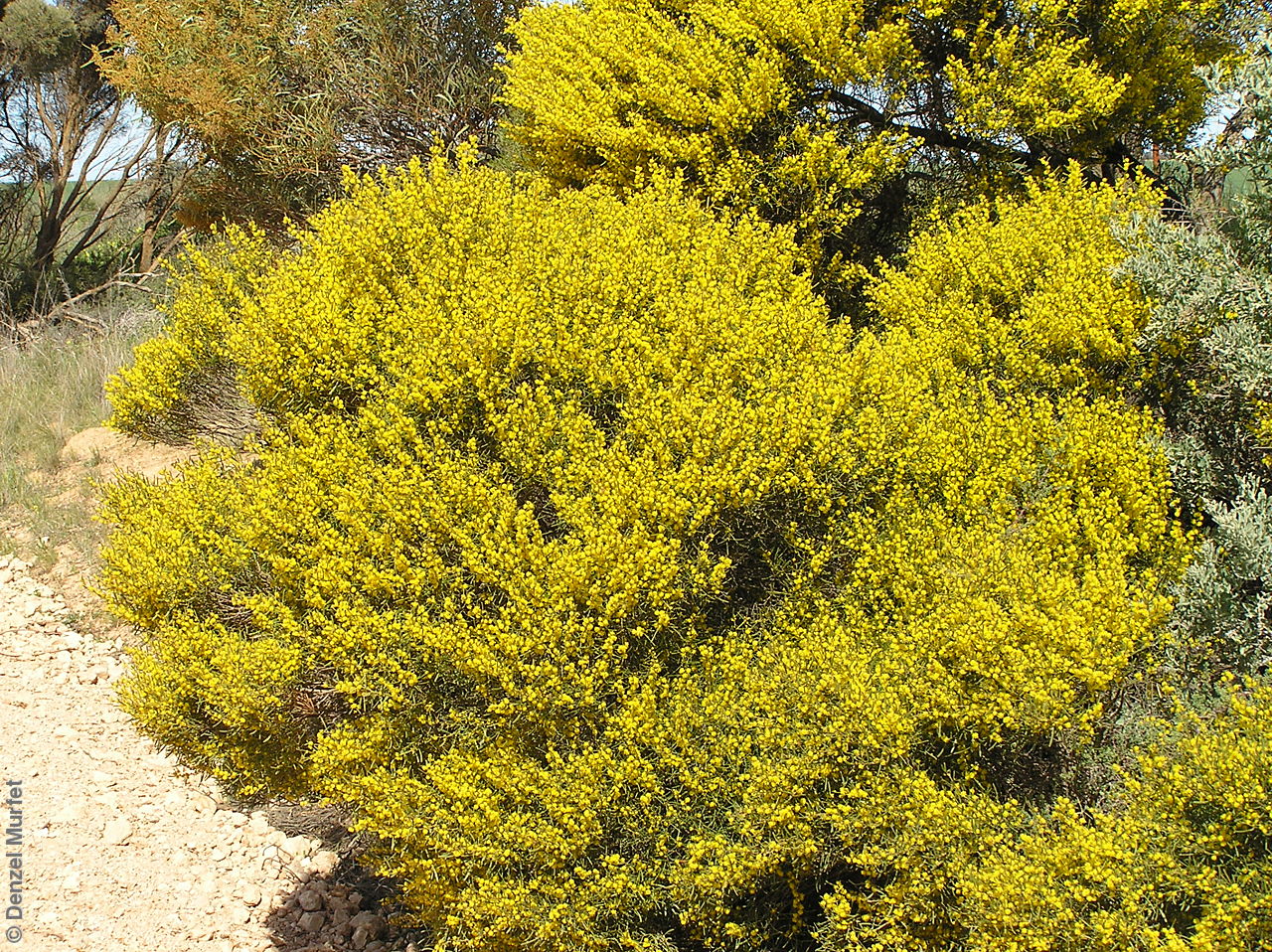
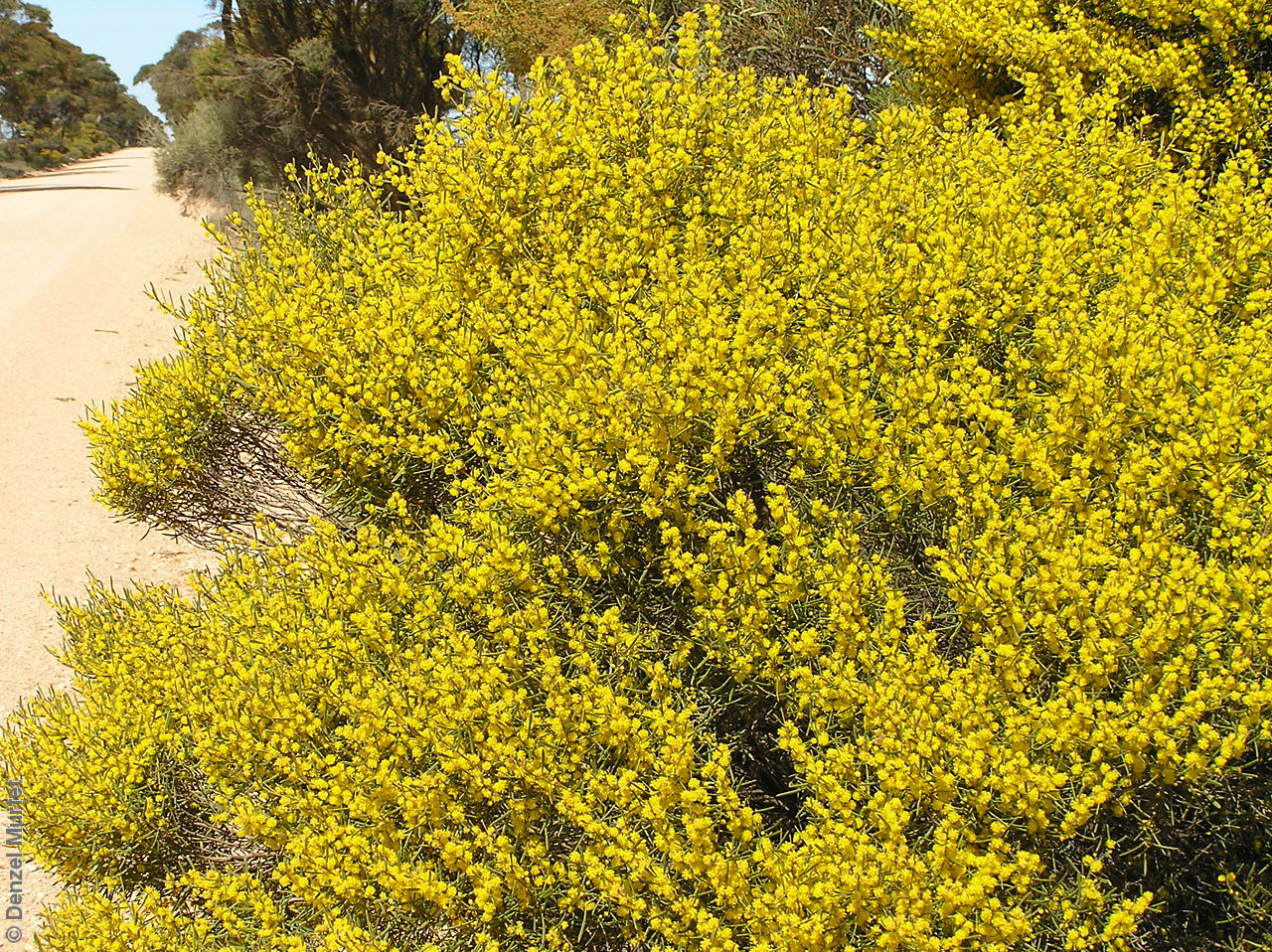
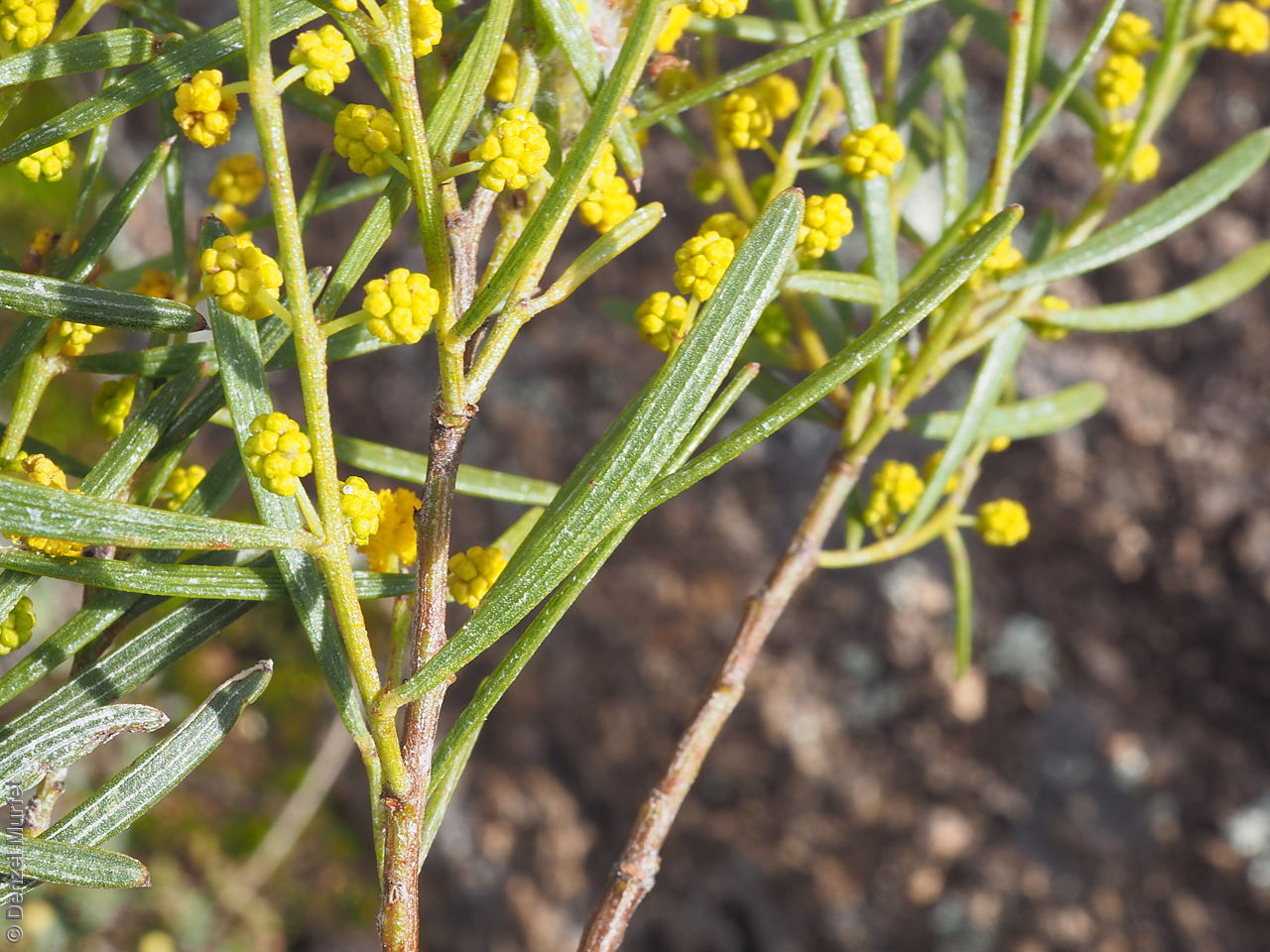
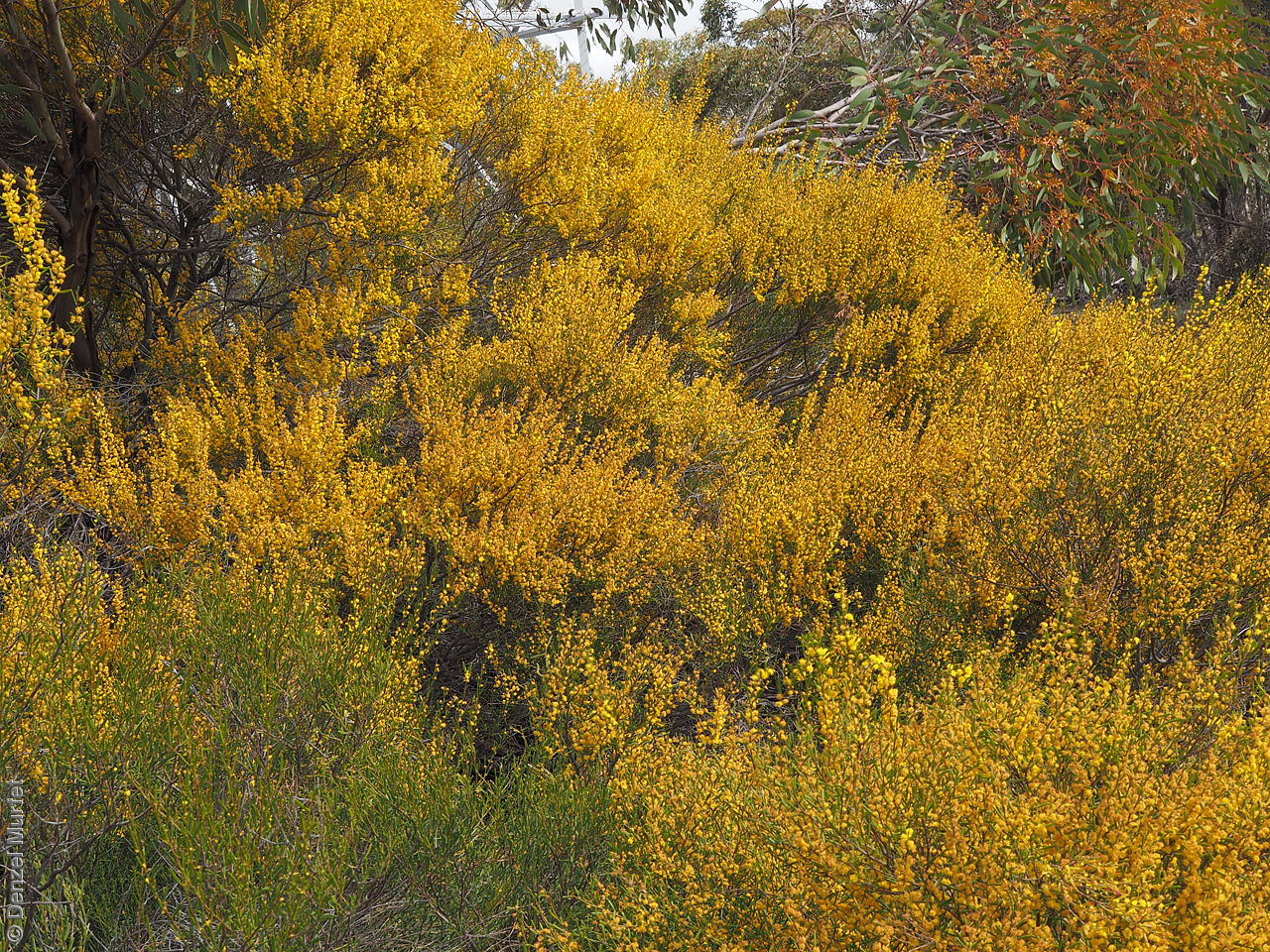
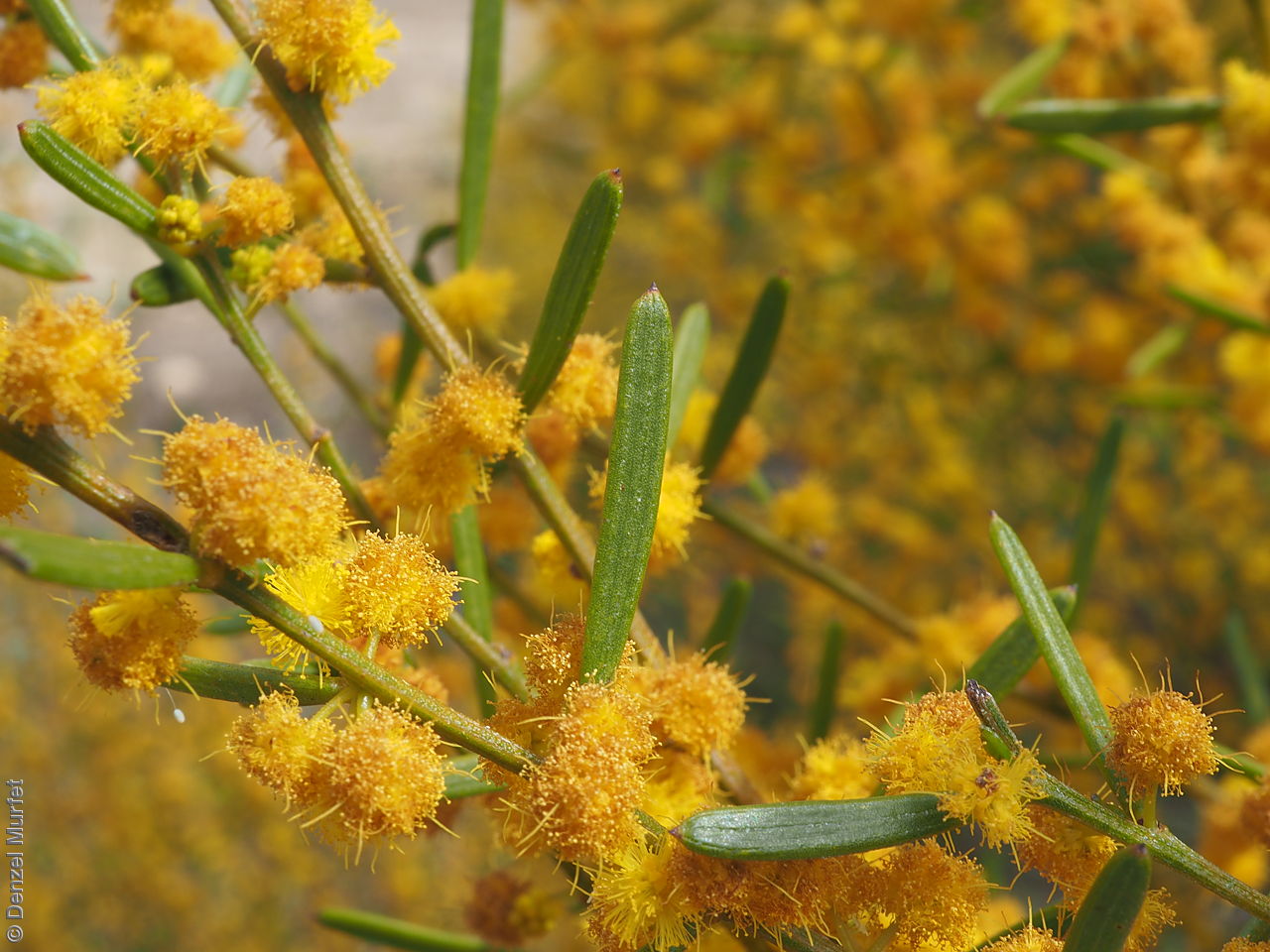
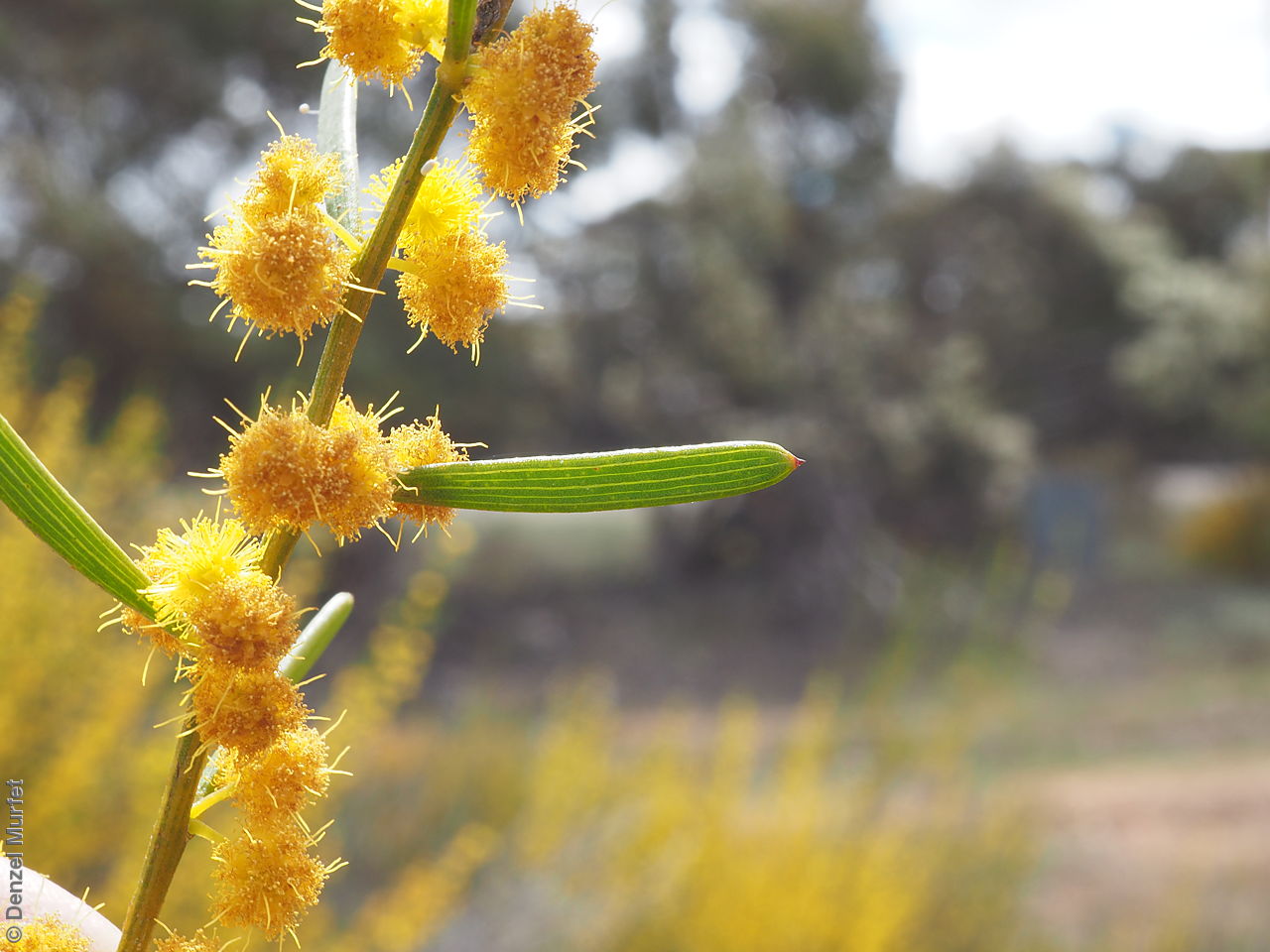
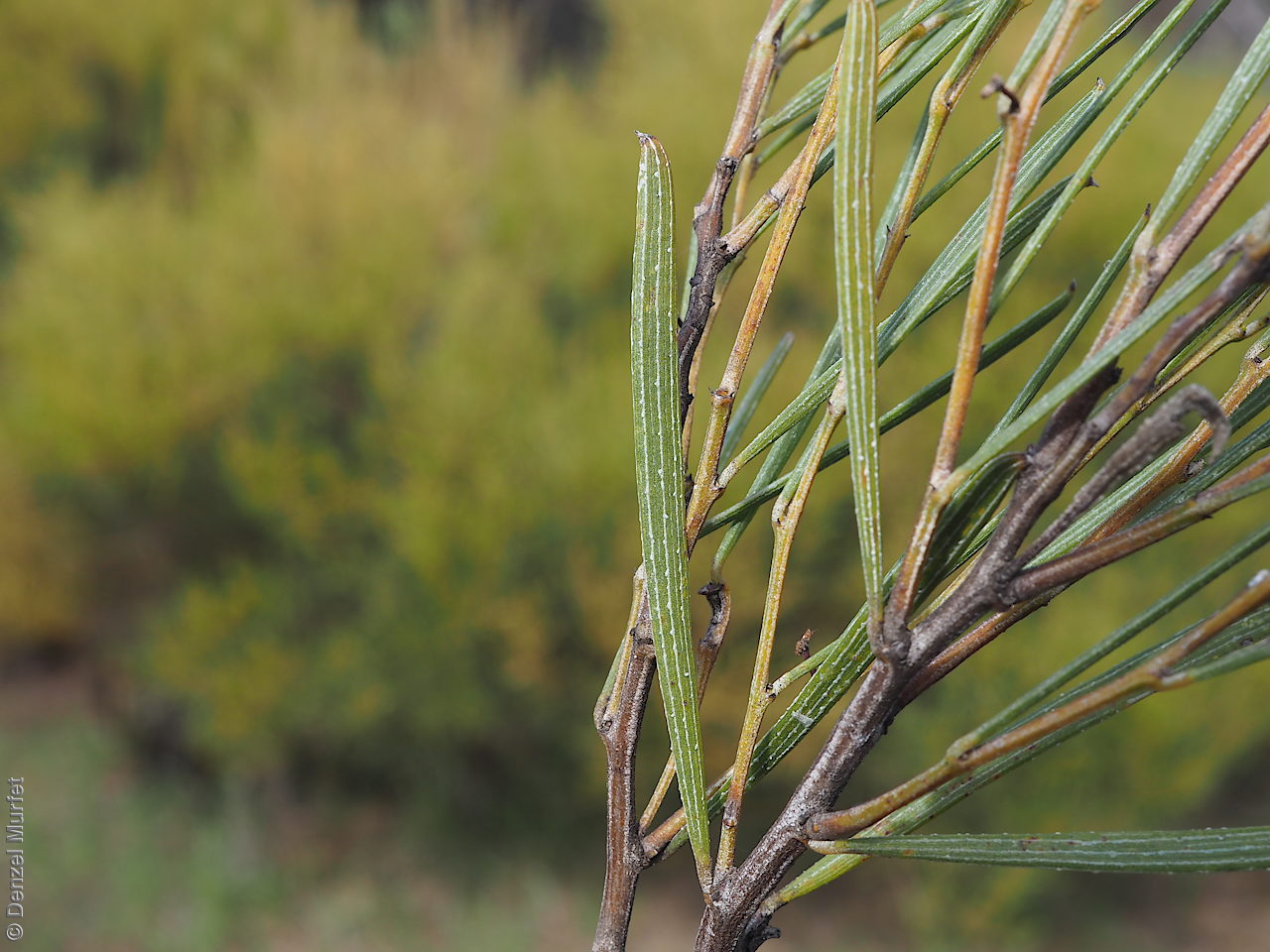
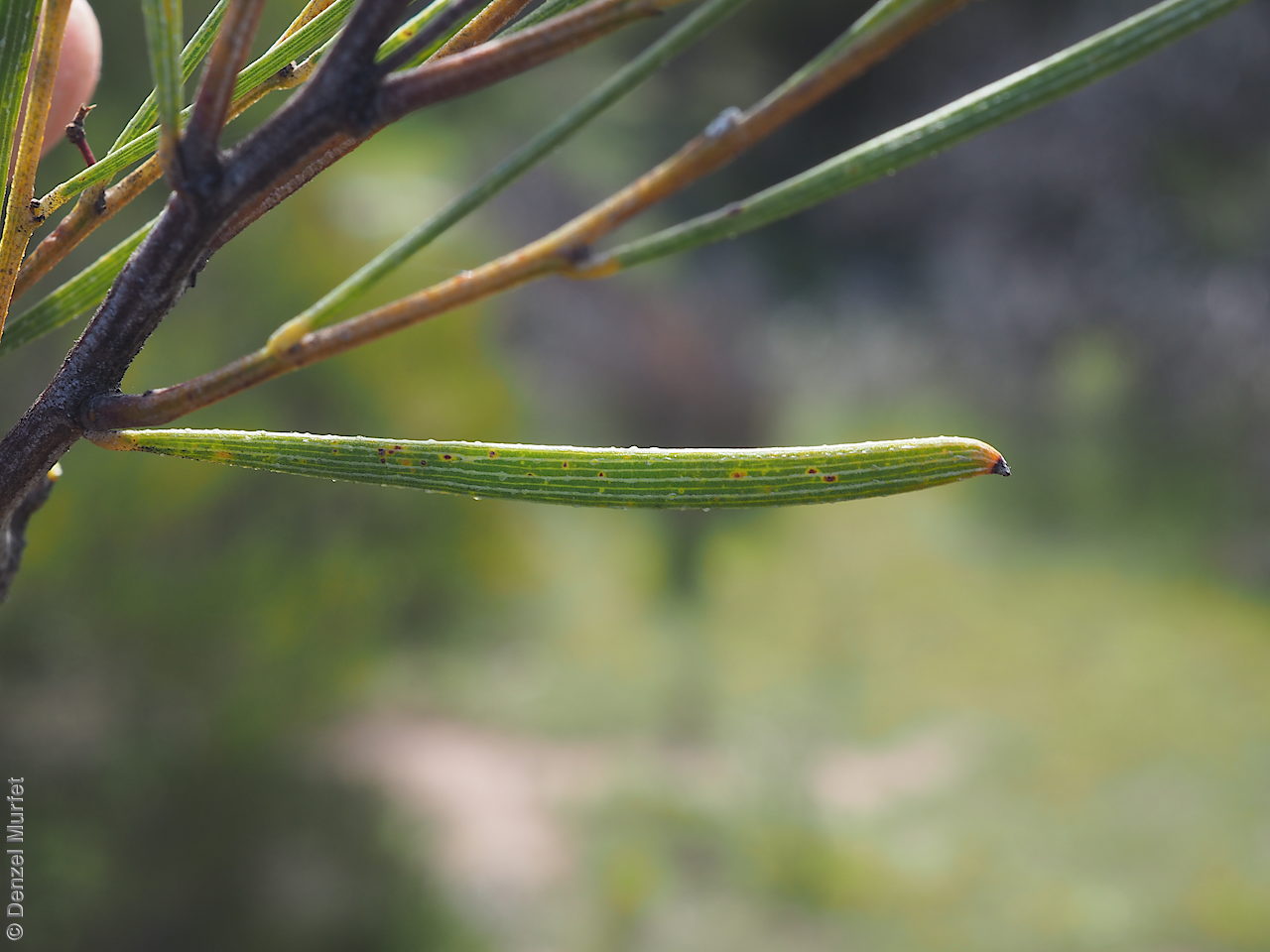
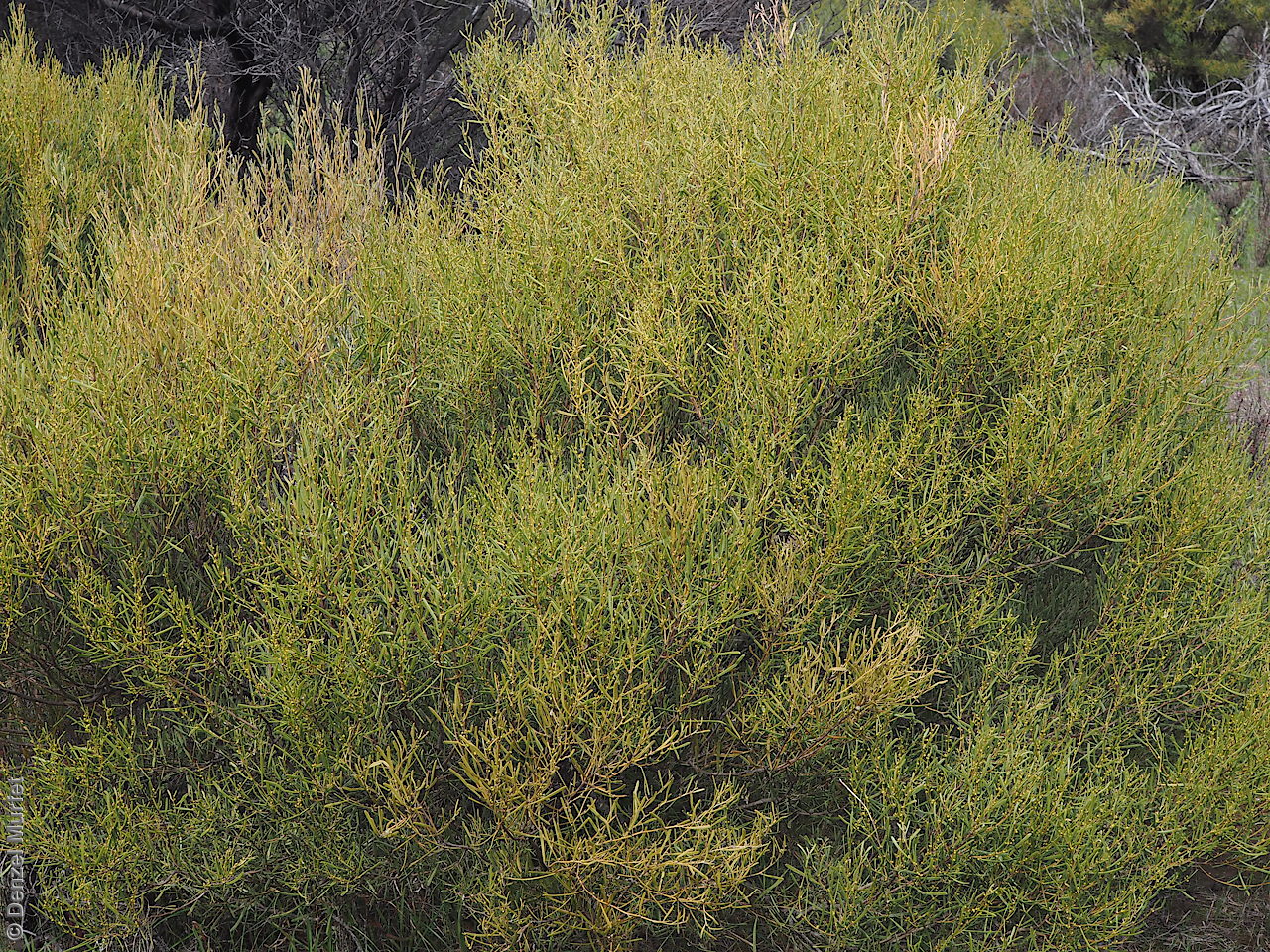
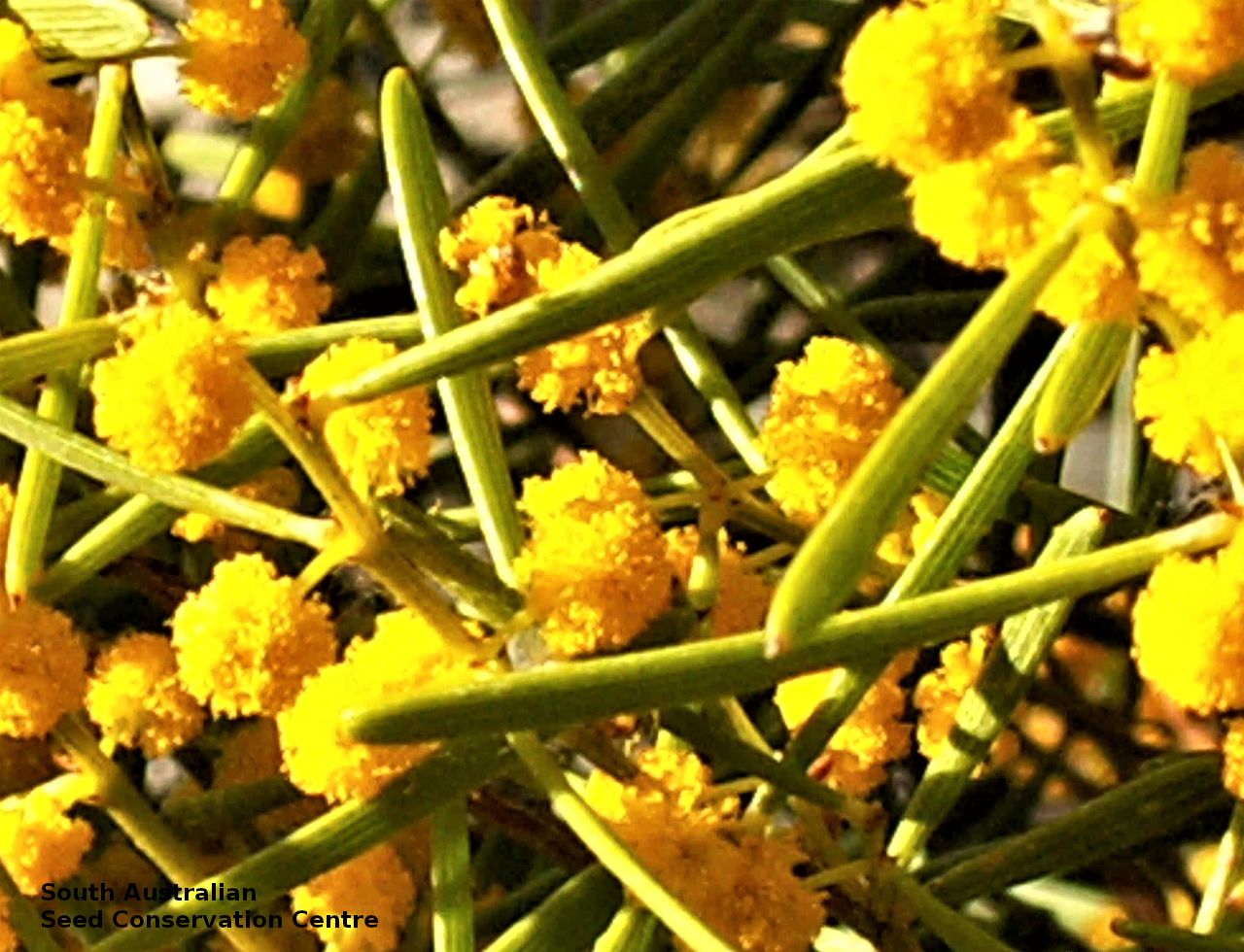
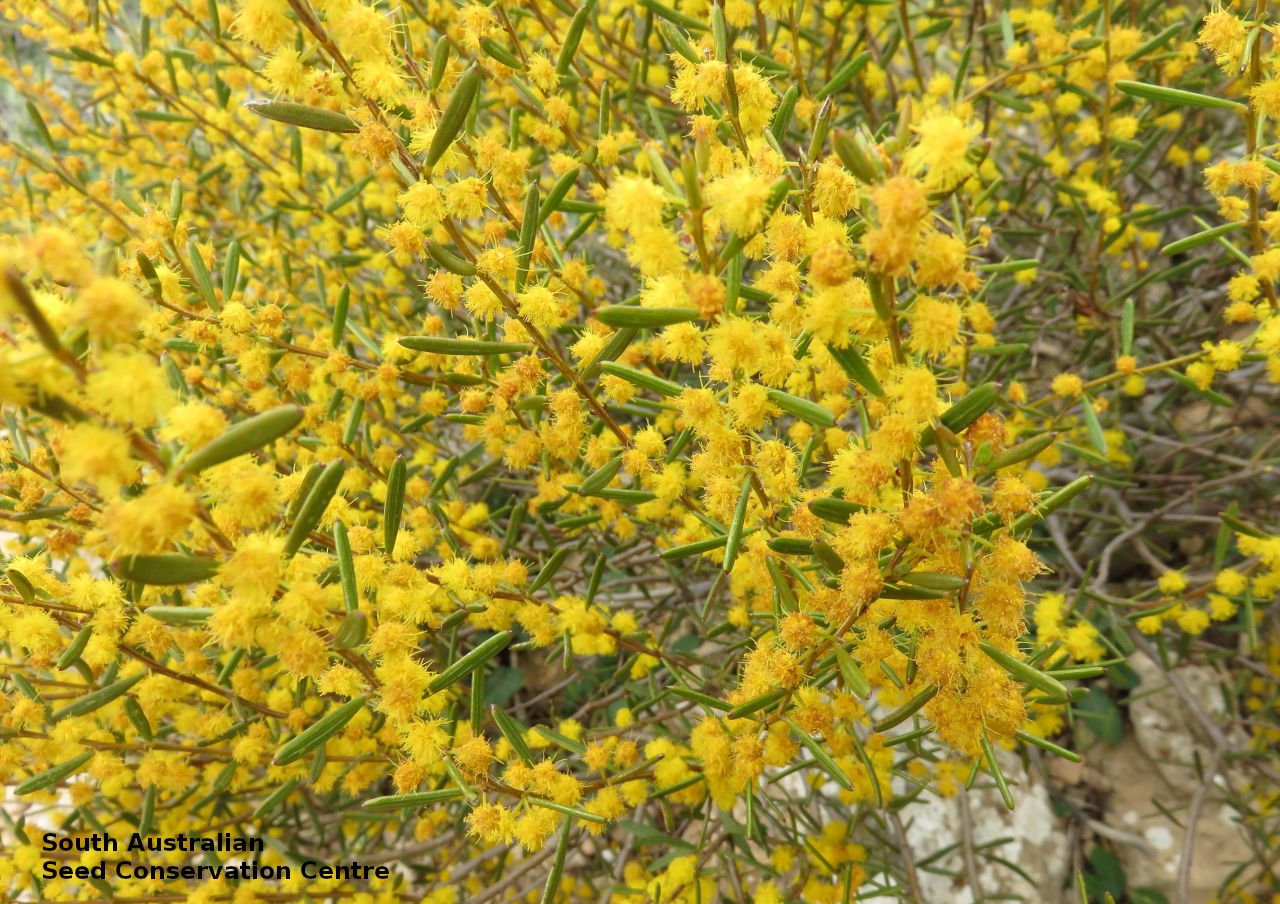
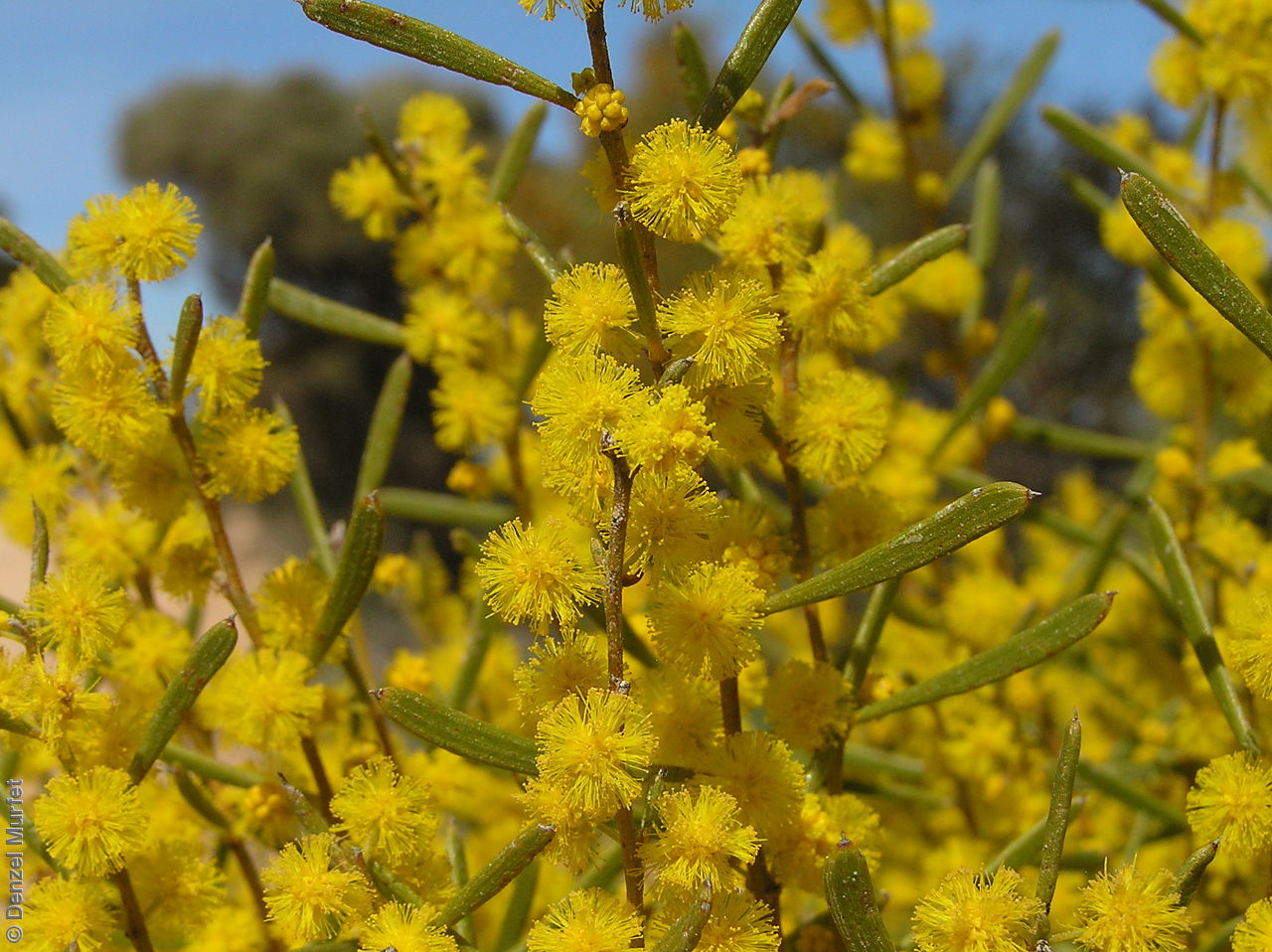
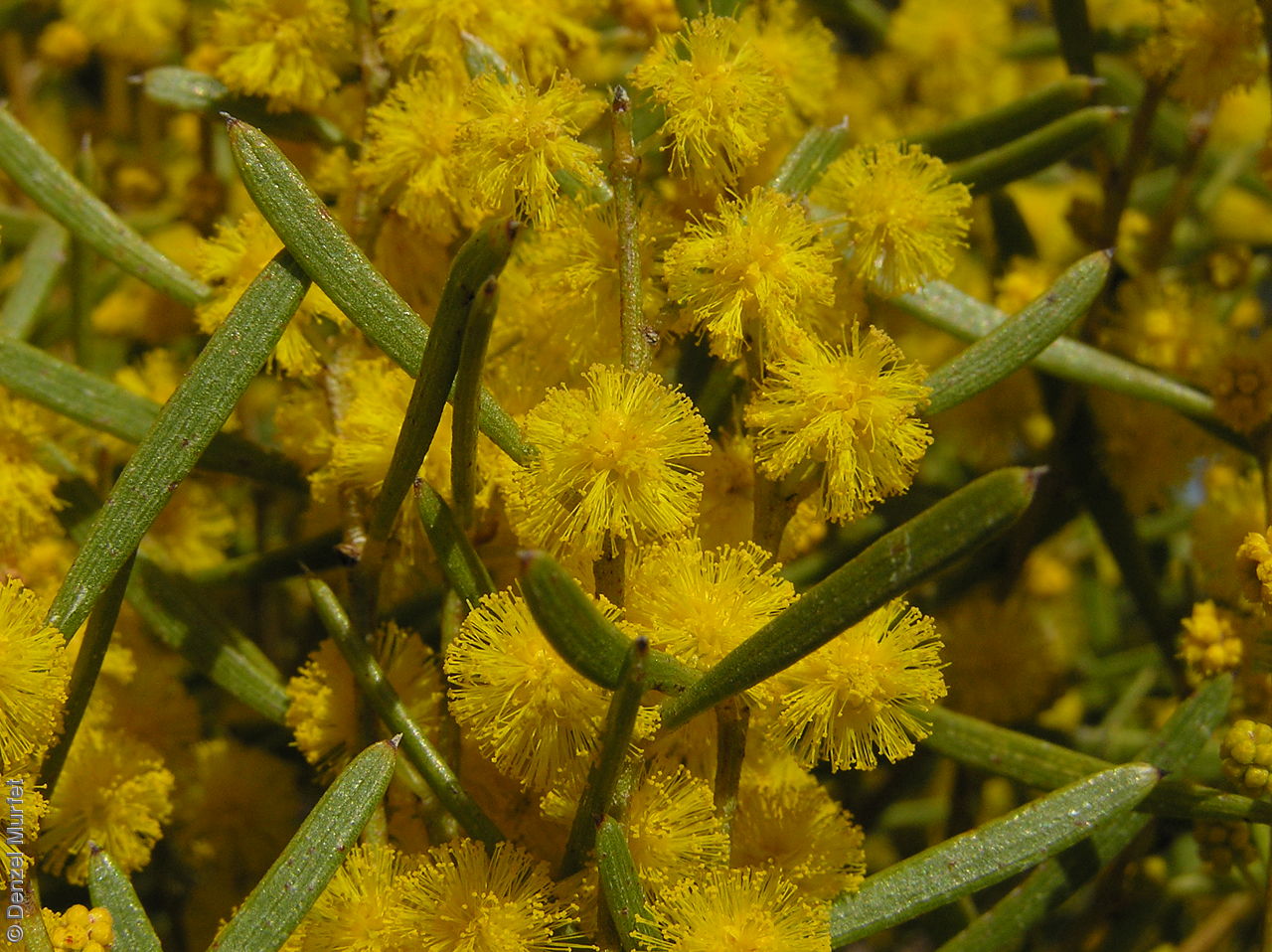
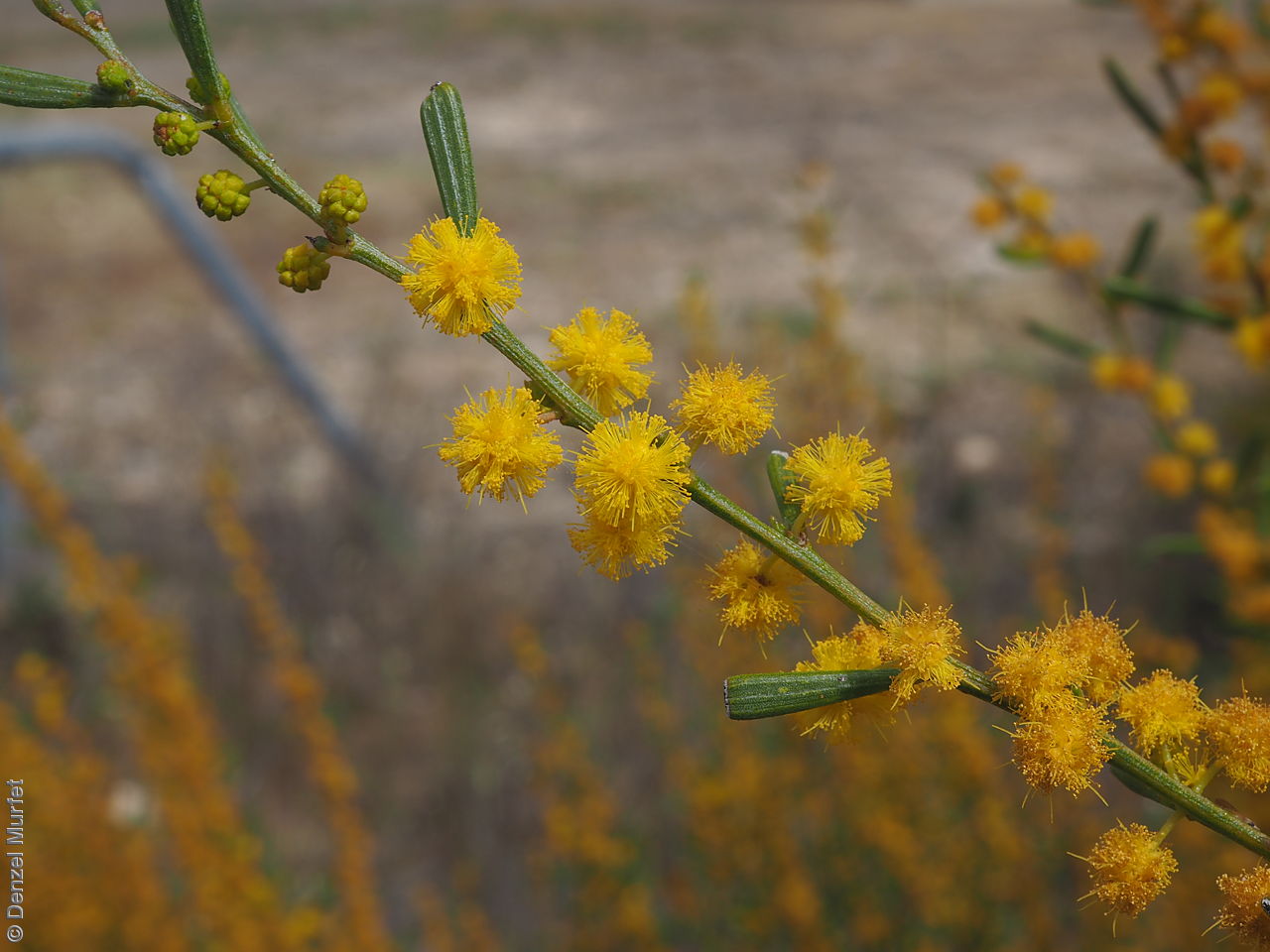
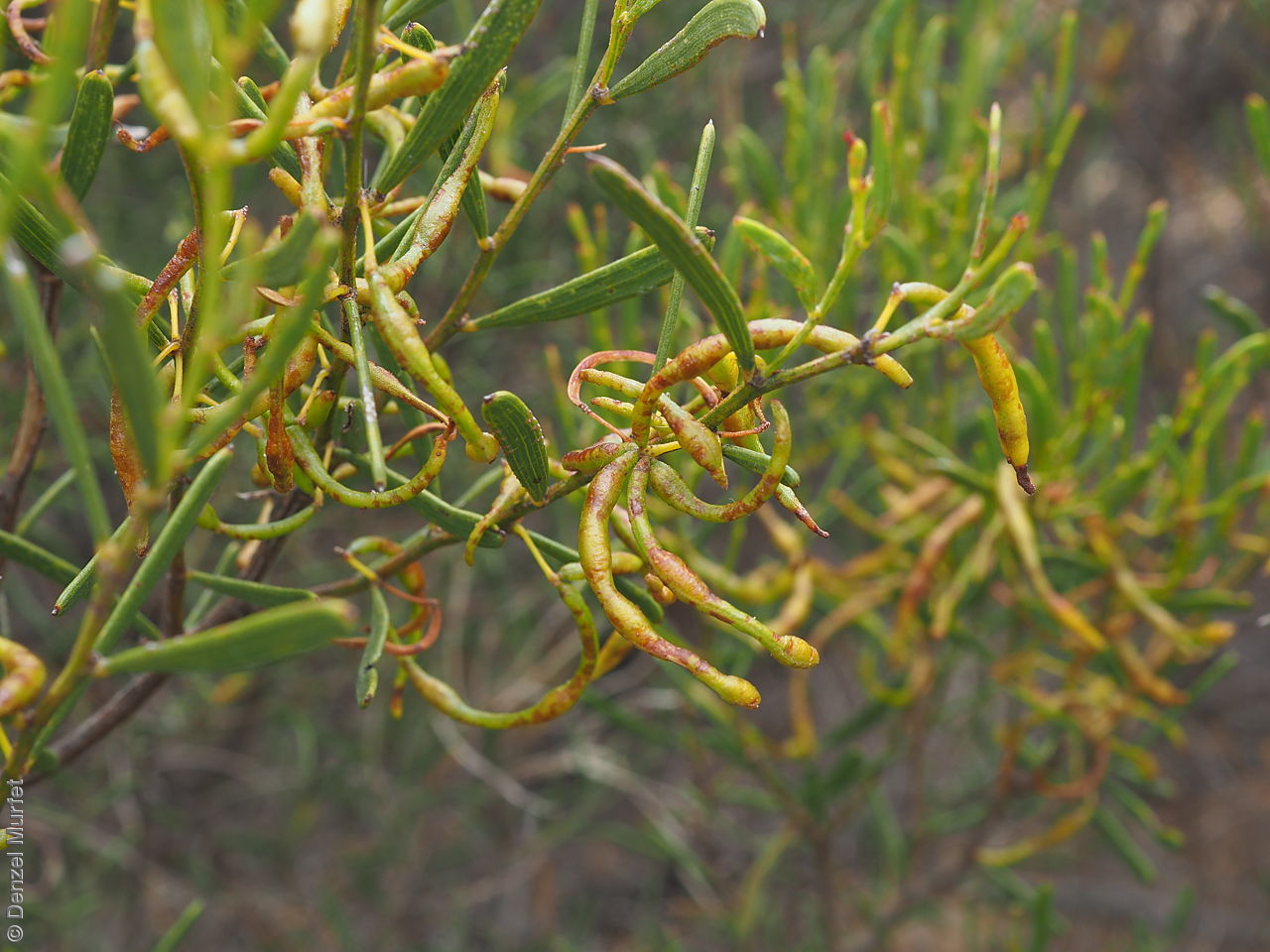
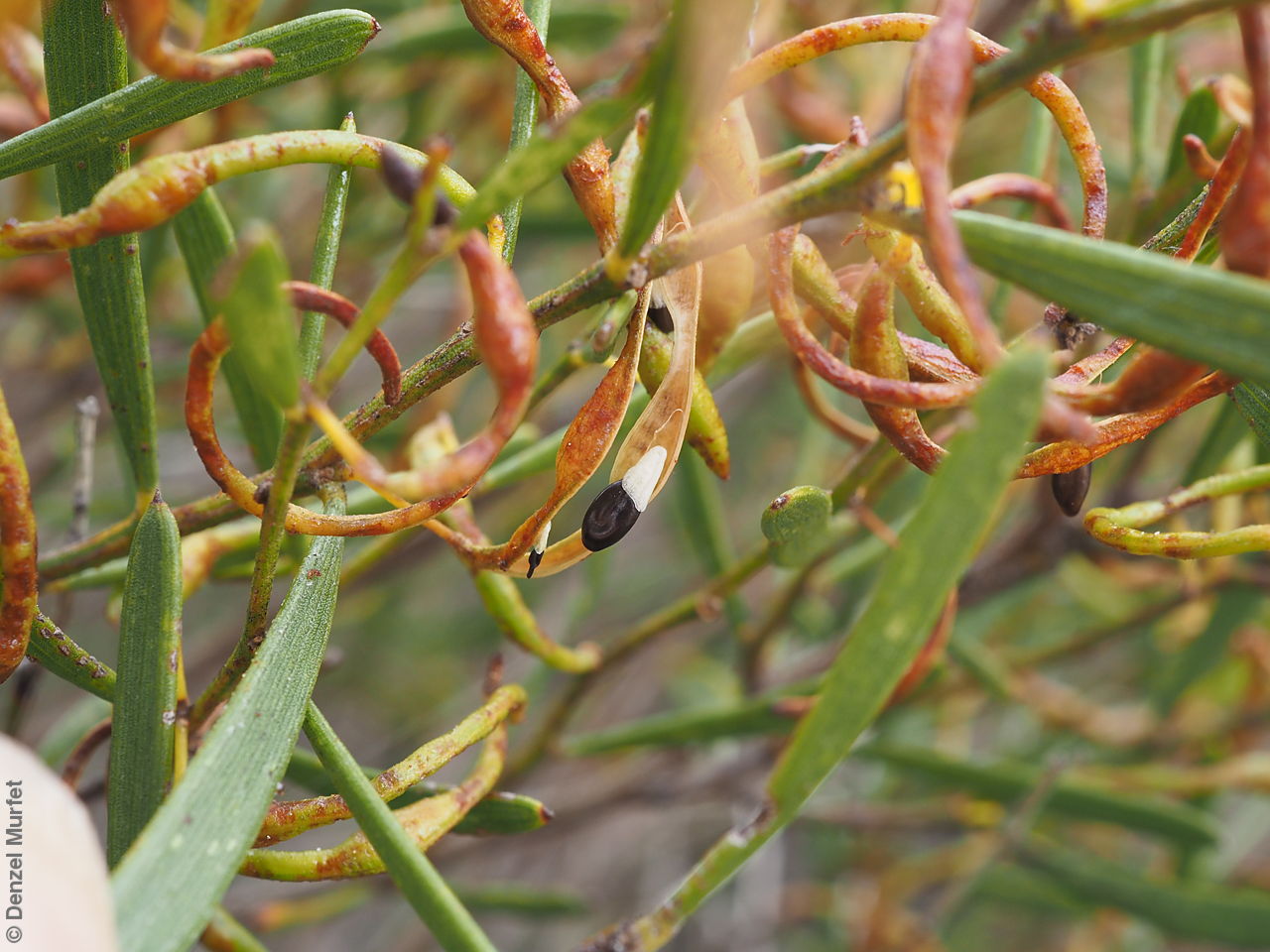
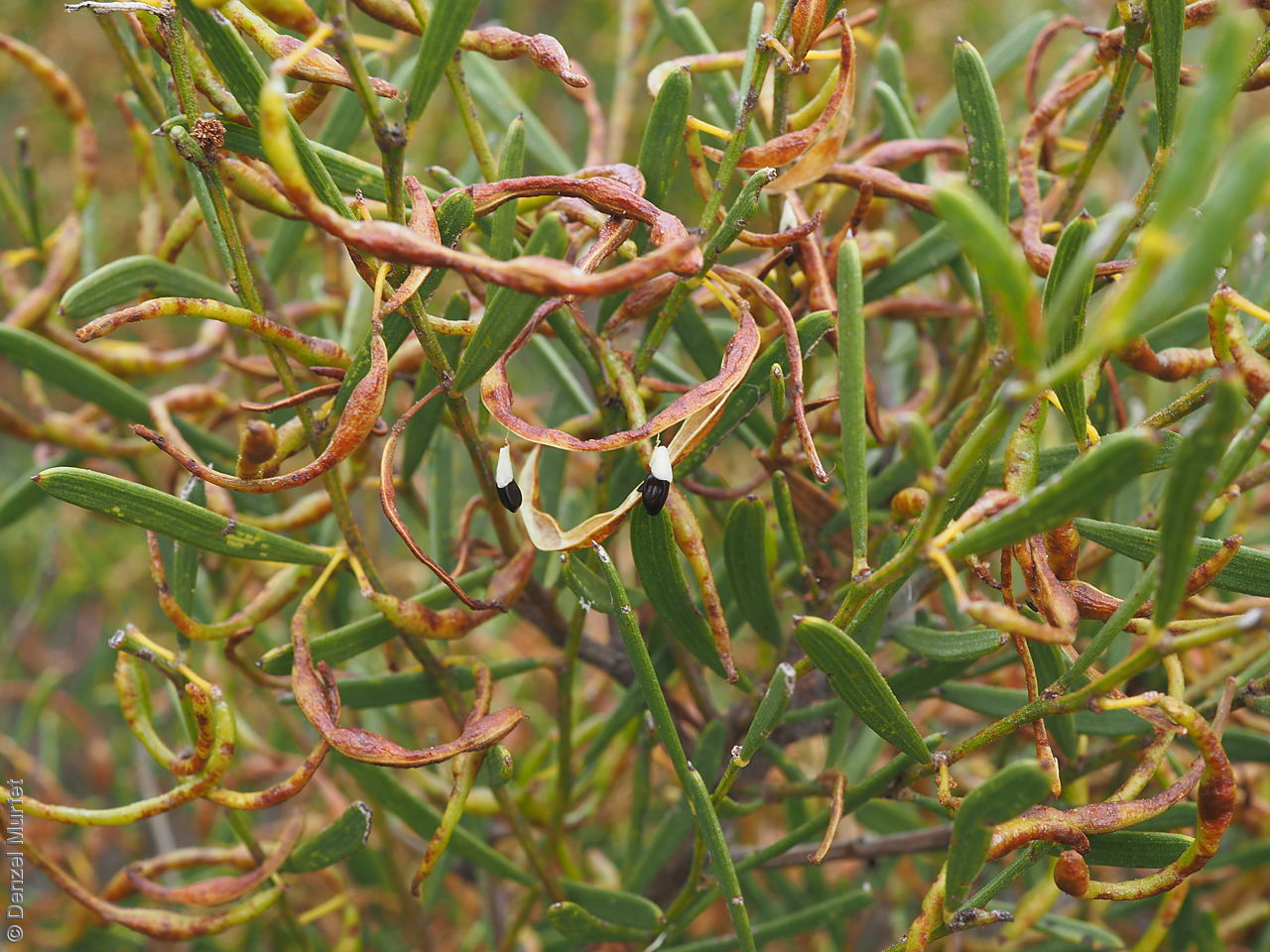
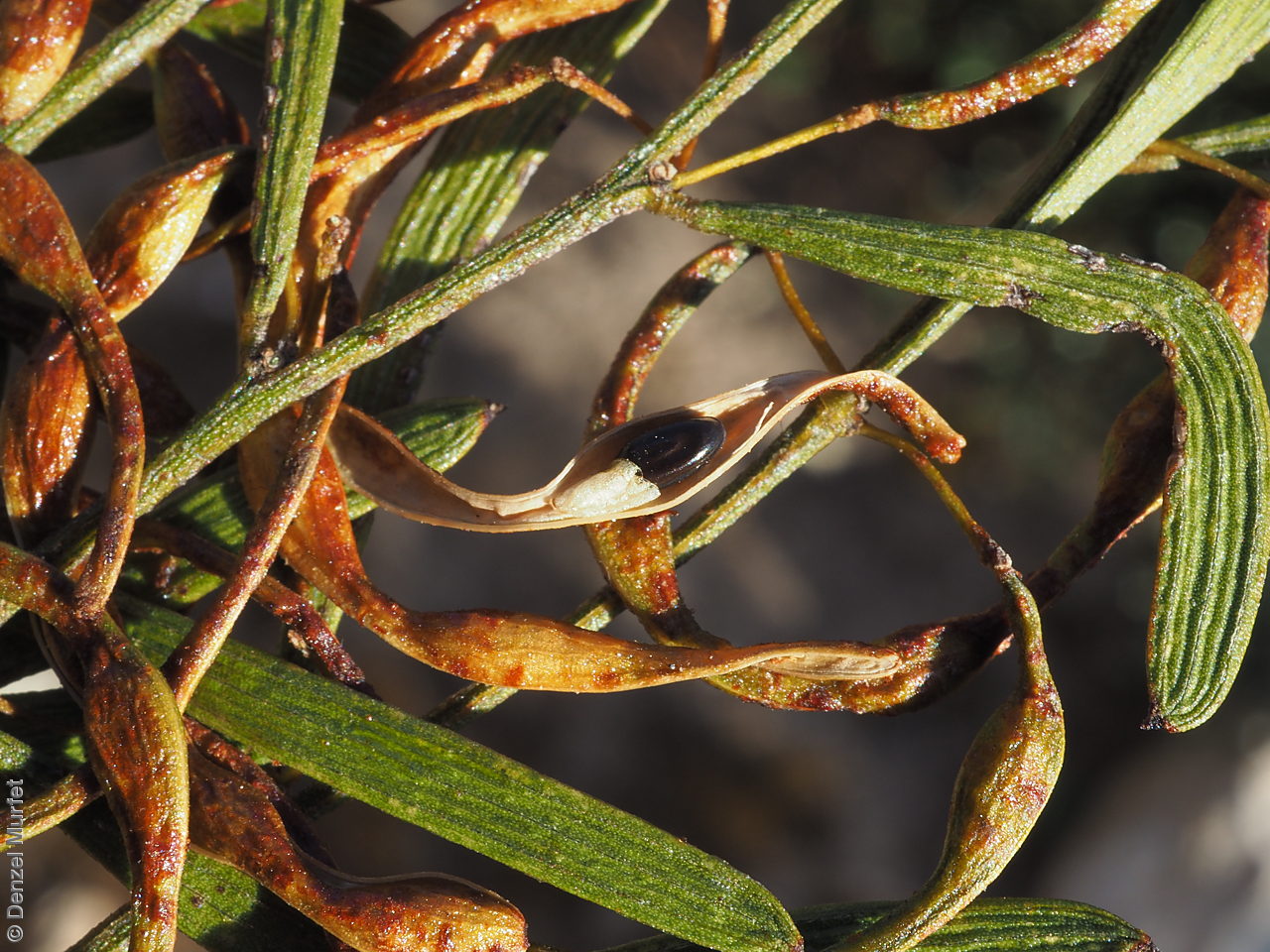
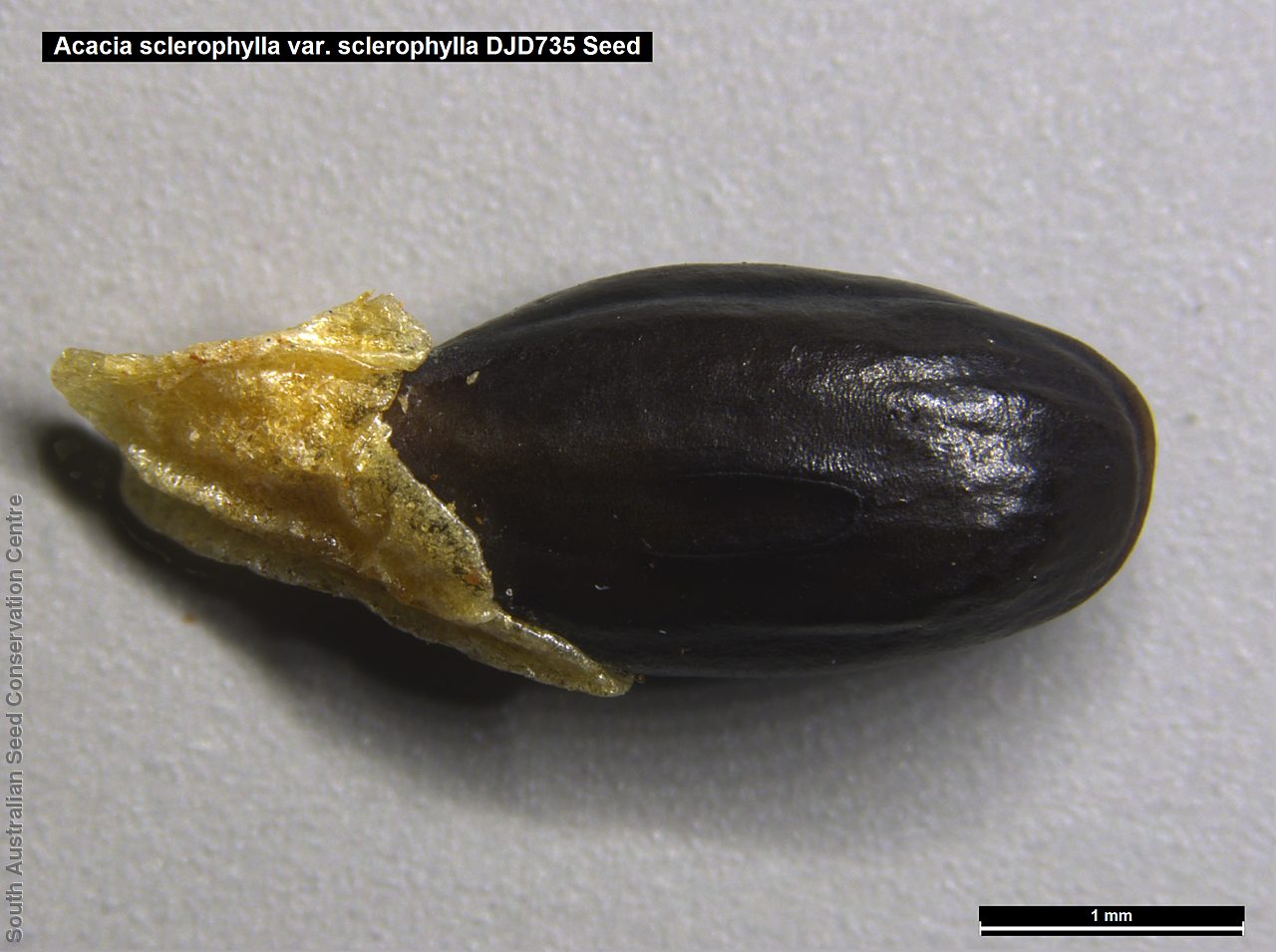
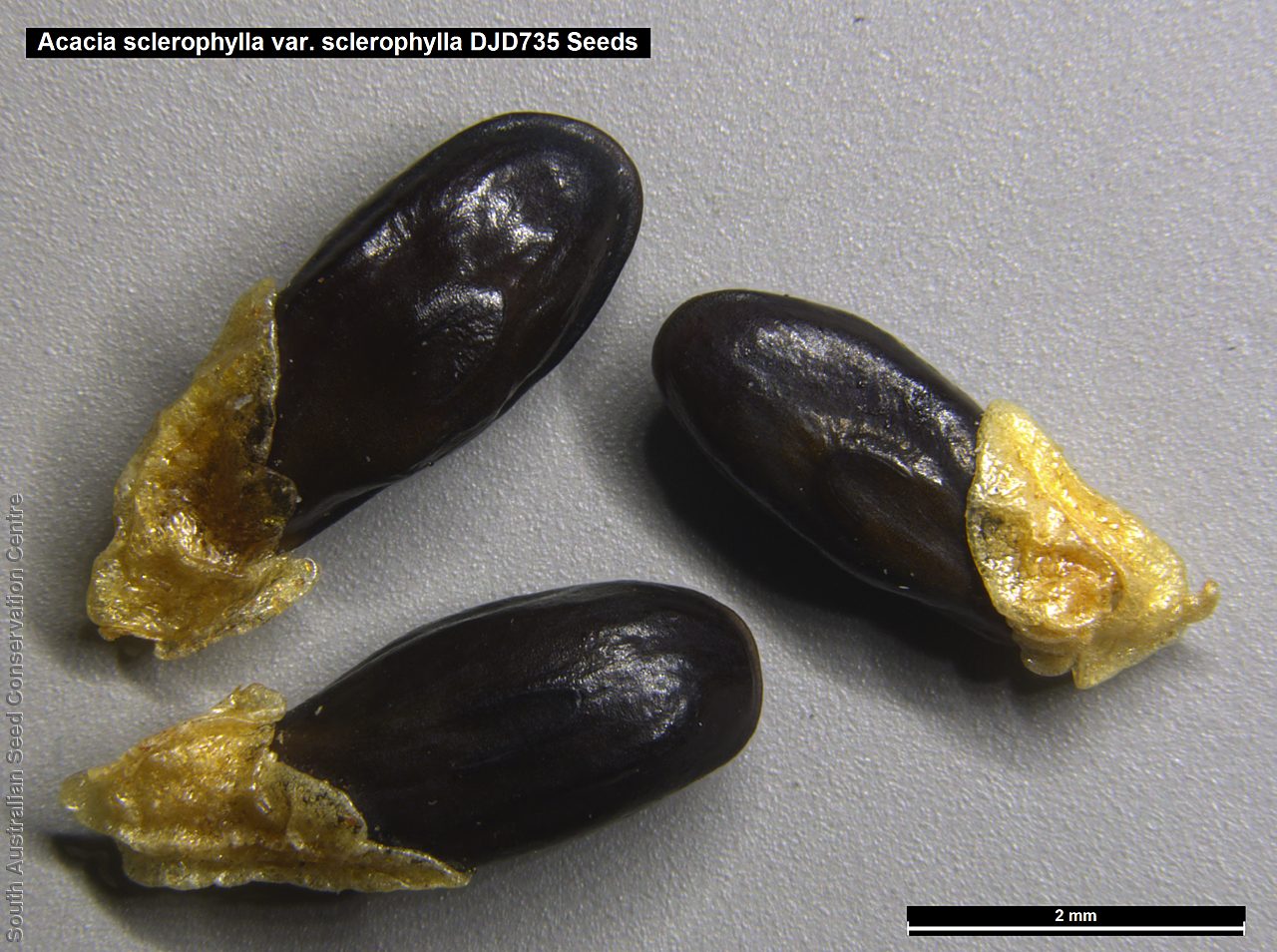

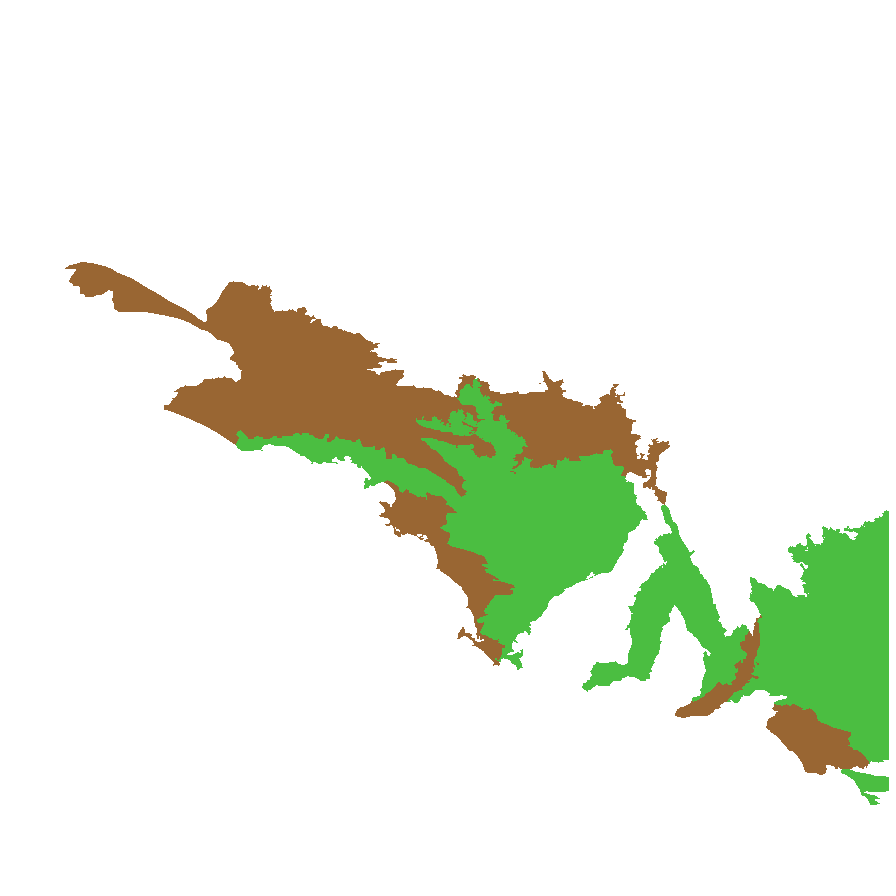
Botanical art
Prior names
Acacia sclerophylla
Etymology
Acacia from the Greek 'akakia' and derived from 'ake' or 'akis' meaning a sharp point or thorn and 'akazo' meaning to sharpen. Dioscorides, the Greek physician and botanist used the word in the 1st century AD for the Egyptian thorn tree, Acacia arabica. Sclerophylla from the Greek 'scleros' meaning hard and 'phyllon' meaning a leaf, referring to the species' hard-textured phyllodes.
Distribution and status
Found from Streaky Bay on the west coast of Eyre Peninsula to Yorke Peninsula, Mount Lofty Ranges, and Murray region, growing on sandy alkaline yellow duplex, red shallow porous loam, brown calcareous earths and dark grey-brown calcareous loam earths. Also found in Western Australia, New South Wales and Victoria. Native. Common in South Australia. Common in the other States.
Herbarium regions: Eyre Peninsula, Northern Lofty, Murray, Yorke Peninsula, Southern Lofty, South Eastern
NRM regions: Adelaide and Mount Lofty Ranges, Eyre Peninsula, Northern and Yorke, South Australian Murray-Darling Basin, South East
AVH map: SA distribution map (external link)
Plant description
Low, much-branched, grey bark shrubs spreading to 2 m high, often much wider than high. Leaves thick, straight or slightly curved; narrowly oblanceolate to narrowly oblong-cuneate to 4 cm long and 4 mm wide. Inflorescences simple and axillary, solitary or twin with globular, bright yellow flower-heads. Flowering between July and October. Fruits are long, curved pod to 6cm long and 3 mm wide; finely twisted, raised over the seeds, with margins slightly constricted between seeds. Seeds are dark brown to black, oblong to elliptic seed to 4 mm long and 2 mm wide Seed embryo type is investing.
Seed collection and propagation
Collect seeds between November and January. Collect mature pods that are turning brown, with hard, dark seeds inside. Place the pods in a tray and leave to dry for 1-2 weeks or until the pods begin to split. Then rub the dried pods to dislodge the seeds. Use a sieve to separate any unwanted material. Store the seeds with a desiccant such as dried silica beads or dry rice, in an air tight container in a cool and dry place. From two collections, the seed viability was average to high, ranging from 70% to 90%. This species has physical dormancy that needs to be overcome for the seed to germinate (e.g. nicking or softening the seed coat).
| Location | No. of seeds (weight grams) | Number of plants | Date collected | Collection number Collection location | Date stored | % Viability | Storage temperature |
|---|---|---|---|---|---|---|---|
| BGA MSB | 5,000 (16.75 g) 5,500 (17.1 g) | 40 | 20-Dec-2006 | DJD735 Murray | 1-Aug-2007 | 90% | -18°C |
| BGA | 2,000 (7.61 g) | 12 | 20-Dec-2006 | Ferris McDonald Murray | 1-Aug-2007 | 70% | -18°C |
Number of plants: This is the number of plants from which the seeds were collected.
Collection location: The Herbarium of South Australia's region name.
% Viability: Percentage of filled healthy seeds determined by a cut test or x-ray.